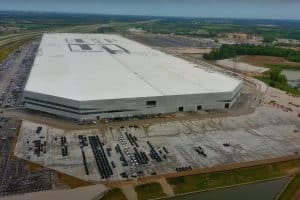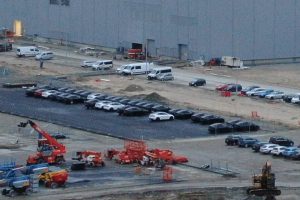- 🛠️ Tesla is “recalling” 1.68 million vehicles in China with a software update.
- 🚘 The issue affects Model 3, Model Y, Model S, and Model X vehicles in China.
- 🔧 The problem involves a faulty hood latch that could obstruct the driver’s view.
- 🌐 Fix will be deployed through an Over-the-Air Software Update needing internet connectivity.
- 🇨🇳 Vehicles impacted were built between October 2020 and July 2024.
- 🇺🇸 Similar issue was recently addressed in the US with an OTA update.
- 📉 Only 1% of the vehicles are expected to actually have the defect.
- 🚀 China is a crucial market for Tesla, with strong EV demand and competition.
- 🤝 Tesla has a strong relationship with the Chinese government.
- 🚗 Tesla’s Full Self-Driving feature may soon be introduced in China.
Tesla has once again demonstrated its innovative approach to vehicle maintenance and recalls. The company has announced a “recall” of 1.68 million vehicles in China, affecting several models, including the Model 3, Model Y, Model S, and Model X. Unlike traditional recalls that require physical servicing, Tesla will address the issue via an Over-the-Air (OTA) Software Update. In this blog post, we’ll delve into the specifics of this recall, its implications, and Tesla’s strategic maneuvers in the competitive Chinese market.
Analyzing the Recall: A New Era of Vehicle Maintenance
Tesla’s announcement of a recall involving 1.68 million vehicles in China marks a significant milestone in automotive maintenance practices. The affected vehicles were built between October 2020 and July 2024. The primary issue is a faulty hood latch that could potentially obstruct the driver’s view, posing a significant safety risk.
Impacted Models
- Model 3
- Model Y
- Model S
- Model X
The Over-the-Air (OTA) Update: How Does It Work?
The conventional recall process usually involves vehicle owners bringing their cars to a service center for physical repairs. However, Tesla’s Over-the-Air (OTA) software updates revolutionize this approach. Here’s a closer look at how OTA updates work and their advantages:
- Wireless Delivery: OTA updates are delivered wirelessly, much like how smartphones receive software updates. This eliminates the need for a physical visit to a service center.
- Immediate Fixes: Once the update is initiated, the vehicle’s system downloads and applies the fix automatically, often within minutes.
- Reduced Downtime: Owners can continue using their vehicles with minimal disruption, as updates can be scheduled during off-peak hours.
Why is the Hood Latch Issue Prevalent?
The recall is rooted in a design flaw within the hood latch system. An unlatched bonnet can potentially open while driving, obstructing the driver’s view and increasing the risk of accidents. Tesla’s proactive approach in addressing this issue via OTA updates ensures that over 1.68 million vehicles are corrected swiftly and efficiently.
A Comparative Glance: China vs. U.S.
Interestingly, Tesla faced a similar issue in the United States just a week prior, recalling over 1.8 million units due to the same hood latch defect. By addressing such issues promptly and uniformly across different markets, Tesla reinforces its commitment to safety and customer satisfaction.
The Chinese Market: A Critical Frontier for Tesla
China represents a crucial market for Tesla, given the strong demand for electric vehicles (EVs) and the heightened competition in the sector. Here are some key points about Tesla’s positioning in China:
- Strong EV Demand: China boasts a robust market for EVs, making it a critical area for Tesla’s expansion.
- Competitive Environment: The Chinese EV market is highly competitive, with numerous local and international players.
- Government Relations: Tesla has fostered a strong relationship with the Chinese government, which is crucial for navigating regulatory landscapes.
Full Self-Driving (FSD) in China
In a strategic move, Tesla is also preparing to introduce its Full Self-Driving (FSD) feature in China. This comes after recent discussions between Tesla’s CEO Elon Musk and Chinese officials. The introduction of FSD could significantly bolster Tesla’s competitive edge in the market.
Final Thoughts: Tesla’s Innovative Approach
Tesla’s handling of the hood latch issue via OTA updates is a testament to the company’s innovative spirit and commitment to customer safety. By leveraging technology to streamline the recall process, Tesla not only addresses the immediate problem but also sets a new standard for how vehicle maintenance and recalls can be managed in the future.





